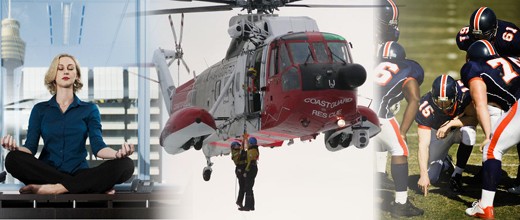Website sections:
Current section's content:
- You Can Manage and Program Creativity
- Creative Abilities and Creative Thinking Skills Management
- Briefly About CreativityModel Method Usage
- CreativityModel Method Usage Opportunities and End-User License Agreement
- Current Version of CreativityModel Method
- CreativityModel Method Version Changes
- CreativityModel Method Glossary
- CreativityModel Method Abstract
- Explanation of the Method's Component Parts and How the Component Parts Interact
- Explanation of How the Method's User Achieves Results
- CreativityModel Method - Generate Dots, Connect the Dots
- CreativityModel Method Usage Areas
- The Artist in You
- Growth of the Artist in You
- The Result Getter in You
- Applying the Result Getter in You
- About Choice Supported Creativity Usage
- The Problematic Side of Business Creativity
- Creativity Management and Business Creativity
- Sales CRM Software Development Example
- Why Does Creativity Management Matter and What Can You Do About This?
- Goal Oriented Creativity Management and CreativityModel Method
- Goal Oriented Creativity Management and Your Personal and Professional Life
- Teenager, Version 1 - Confusion
- Teenager, Version 2 - Life Management and Career Development
- Managers, Version 1 - Zigzagging Business Development
- Managers, Version 2 - Innovation Management and New Product and Service Development
- The President, Version 1 - Some of It Did Happen
- The President, Version 2 - Self-Expression, Conflict Resolution, Creativity and Leadership
- CreativityModel Method Development Background
- Further Development of CreativityModel Method




















The President, Version 2 - Self-Expression, Conflict Resolution, Creativity and Leadership
This article is the seventh and the last part of a seven article series on neglecting versus using goal oriented creativity management principles.
- This series consists of an introductory article, and three sets of articles, each of which contain two versions:
- Teenager, Version 1 and Teenager, Version 2;
- Managers, Version 1 and Managers, Version 2; and
- The President, Version 1 and The President, Version 2 (current article).
- In addition, two software development related articles on this website form a somewhat similar pair.
- Sales CRM Software Development Example article describes a choice supported creativity driven decision making process in IT, in situations where goal oriented creativity should be used instead. What CRM Sales Software Is Right For You? article describes a goal oriented creativity driven software selection and development process.
These articles have a common thread that is related to CreativityModel Method usage. From a teenager to an employee, to president of a company or a country - CreativityModel Method usage principles are the same. So, your learning to use them is worth the effort, because you can use these creativity management skills throughout your life.
Both Version 1 and 2 are examples of projects that require goal oriented handling. Each Version 1 is an example of a scenario where goal oriented creativity principles should be used, but are not being used. This creates consequences. That's just the way life is, whether we like it or not.
Each Version 2 is the same scenario, except that this time goal oriented creativity is being used. The consequences are different, too.
- So, when you read this material, ask yourself, which version do you identify with more, Version 1 or 2?
- Do you recognize any of the people you know in these versions? In version 1 or 2?
- Both goal oriented creativity usage and self-expressive creativity usage can be learned and taught. Keeping this in mind, where are you now, and where do you want to be, as far as your own goal oriented creative thinking skills usage is concerned? Do you know anybody in your life who would benefit from improving his or her creativity management skills?
About This Article
The participants and the circumstances that this article describes are the same as in The President, Version 1 - Some of It Did Happen article. The difference is, that this article focuses on goal oriented task handling.
Lack of personal experience or expertise in the relevant subject matters was not the reason that led to the problems described in The President, Version 1 - Some of It Did Happen article. A leader or manager in charge, who has any relevant resources, can use other people's expertise as needed. Nowadays, an average person with access to the Internet can find relevant information in most areas. The President of the United States has a wealth of sophisticated relevant expertise and resources available to him. These resources, when used correctly, can produce high quality expertise and solutions.
Lack of relevant reasonably accurate information was not the problem either. It is known that the relevant reasonably accurate information did exist and was made available to the President.
Further, especially in politics, the person in charge always has to deal with people who peddle their own interests and misguided beliefs. That's just the nature of that line of work.
The way the person in charge - the President - made the decisions is the source of the problems. I am not blaming the person here. I am blaming the structure of the decision making methods that he used.
Anybody can fall into the same trap - but we can also learn to avoid this and the problems that ensue. So, that's the point that this article and other articles in this series make.
The pre-Iraq war analysis that is presented below is realistic - nothing, including information that was available, would have presented the participants from approaching the relevant topics in a similar manner.
However, it is unlikely, that the President of the United States would actually give a speech similar to the one described below to his cabinet members and advisors. So, unlike The President, Version 1, this part, The President, Version 2, is fictional. Nevertheless, the underlying theme that ties together these two articles and the rest of the articles in this series, is very real: in most situations usage of goal oriented creative thinking skills leads to different outcome than usage of choice supported creative thinking skills does.
More specifically, it is very likely, that usage of goal oriented creative thinking skills, in situations that require goal oriented handling, leads to different conclusions than usage of choice supported creative thinking skills does. These conclusions are the underpinnings that influence behavior and actions as well.
The circumstances described here are very challenging and difficult to handle. Goal oriented creativity usage can make task handling substantially more manageable.
Because of the relevance, I will repeat here the introductory statements that accompany Version 1 part of this article.
I try to write all the articles on this website without offending anybody. The same applies to this article, and to The President, Version 1 - Some of It Did Happen article as well. So, I have to emphasize that the objective of having the three sets of Version 1 and Version 2 articles is not to compare the President of the United States to a teenager or a business manager. The President's job is immensely more complex and difficult than any business manager's job is.
The objective of these articles is to show how creativity management problems can occur in every area of life. This means, that in every area of life people can learn to handle their creative thinking skills so, that they reduce the probability of having creativity management problems and increase the probability of producing results that benefit them and other people.
If choice supported creativity is used when and where goal oriented creativity should be used, problems will occur regardless of the involved individuals age, gender, wealth, profession, nationality, or any other socio-economic variables.
The bigger is the decision maker's sphere of influence, the bigger can the problems become as well.
Creative thinking skills management can be learned and trained. Neither goal oriented creativity, nor choice supported creativity is difficult to learn.
At the time of writing this article the problem is that the relevant, convenient-to-use learning and training materials are needed, but do not exist yet. So, this issue needs attention. I am hoping to find people who want to do some work in this area, and to relate their professional development to development of creativity management as an industry.
Contents
- Would You Proceed in this Way Instead?
- Here's How I Want to Move Forward
- How I Want the Action Plans to Be Presented
- How I Will Evaluate the Presented Plans
- Here's an Example
- Here's Another Example
- Theme
- Objectives
- Areas that the Main Structural Parts Should Address
- Detailed Structural Information
- How I Will Evaluate the Implementation of the Plans
- Decision Making and Management Tool
- What Good Are Plans If They Have to Be Changed?
- Why We Need This
- The Bigger the Crisis, the More Focus is Needed
- Acknowledge Your Role, Responsibilities and Limitations and Use Expertise and Experience For Filling the Blanks
- Supporting the Agreed On Directions
Would You Proceed in this Way Instead?
Just like in The President, Version 1 - Some of It Did Happen, please try to imagine that you - yes, you - are the President of the Unites States of America. No matter how strange this may seem, please do try to think with me. If you do, it will become clearer why all of this matters to you personally.
The country that you love and currently govern has been through extremely tragic times. Different types of emotional wounds are fresh. Threats, problems and challenges have to be handled on an ongoing bases.
You have learned to use goal oriented creativity principles, thought things through and decided, how you want to handle the current difficult circumstances.
You ask both senior cabinet members and also your extended team of advisors to join you in a meeting for discussing the way you want to handle project management. It's a relatively formal meeting.
Here's How I Want to Move Forward
"I asked you to join me here so that I can explain my views and preferences for handling the challenges that we are facing.
In the lack of clearly stated policy, we are starting to pull in different directions and that is a troubling sign. For example, the CIA, the State Department and the Pentagon seem to be moving in different directions regarding their handling of terrorist threats and problems with Iraq. We cannot afford that. We have to join our forces and focus fighting the terrorists, who are our actual enemies.
Equally importantly, we cannot afford to move forward so, that we handle goal oriented tasks self-expressively. Conflicts between the CIA, the State Department and the Pentagon are good examples here, because these issues are motivated by distrust, fear of getting misguided information and advice, anger over past experiences and personal competitiveness. All of these emotions can be very motivating. However, if we base our actions and entire institutions actions that we lead on such motivating forces, we end up wasting resources and creating problems in the process. If, instead, we are motivated by asking what exactly we need to achieve and what are the best ways to achieve these objectives, we will end up with different and much better outcome.
Further, conflict resolution in general should not be handled self-expressively. Conflict resolution should be handled in a goal oriented manner, through asking what it is that we truly want to achieve and through seeking answers to this question.
So, above all, we will handle in the goal oriented manner every instance where we have to set and achieve goals or objectives. This will be the key to pulling together and managing our forces. I will explain briefly what I mean by this and why we need to use this approach."
How I Want the Action Plans to Be Presented
"Whenever you want my approval for something that needs to be done, please present the information to me in the following format.
Present me a summary, up to one page long, starting with the descriptive theme of the project, followed by the project's goals or objectives.
Next should be an outline of the project's structure, that is, the main structural parts or milestones of the project. Preferably this structure is presented in preceding order from the goals to the starting point, so that I can follow and check out your logic of drawing conclusions and putting together action plans.
Together with the summary please present me a more detailed description of the project's structure, and the relevant supporting material about the resource needs and timeframe involved."
How I Will Evaluate the Presented Plans
"First of all, I will look if your project's goals and the way you intend to achieve these goals make sense to me.
- If your project's goals and the way you intend to achieve these goals make sense to me, then depending on the project priority status I will review either briefly or in detail the rest of the material that describes the project's structure. There, too, first of all I will look if the sequence of the planned steps makes sense. If the gaps between the steps are too big, or if we intend to get from one step to another in a manner that doesn't make sense, I may ask for clarifying information.
- In many instances, especially if the project is a high priority one and deals with complex subject matters, during the evaluation processes I will also seek input from different sources that are independent from the source that submitted the project.
- I will also look for implementation related flexibility. You should put together plans so, that the people who implement them know what should be achieved with the entire project and with each milestone, and can also decide how they will achieve the needed objectives. You can make implementation related recommendations, but as long as the needed milestone goals or objectives are achieved, the people who implement the project should have the flexibility and the right to choose how to best achieve the needed objectives.
- So, part of your job is to foresee and identify the milestones that should be achieved, and to put together plans so, that the participants can handle the unexpected circumstances and still achieve these objectives that are important to achieving the project goals.
- If your project's goals and the way you intend to achieve these goals do not make sense to me, I will send the project back to you.
- If I need to send back a project to the same source multiple times, I will replace the source. That is, I will ask somebody else to work on the same project instead of the person or persons who submitted the poorly thought through action plans."
Here's an Example
In our current circumstances, our national security is the top area of concern. Recently, Iraq and the potential threats that Saddam Hussein poses to our national security have been addressed with increasing frequency. So, different sources suggest that Saddam Hussein should be removed from power.
I asked for war plans with Iraq. In response, after the preparatory work was done, I was told that the plan is that the combined forces of our army will defeat the Iraqi army, will remove Saddam Hussein from power, will hand over the country's governance to an interim Iraqi government and to the United Nations peacekeepers and will leave the country.
My question is: How do these steps fit together in your opinion? What comes after what?
Let's say that our objective is that our forces leave the country after we have handed over the country to an interim Iraqi government and to the United Nations peacekeepers.
This means, that we must be absolutely certain that we can hand over military operations to the United Nations peacekeepers, and that the Iraqis will accept the interim Iraqi government and want to be governed that way at least temporarily.
How can we make such assumptions? Based on what?
We know already, how leery the United Nations is about getting involved in Iraqi regime change. If our plans rely on them taking over in Iraq, it means that our plan is absolutely dependent on that and we cannot do anything before we are absolutely certain that this will indeed happen. However, when we deal with the United Nations, we cannot ever be certain of anything. Even if different strategically important countries would support us initially, we cannot rely on them actually acting when we need them to act and to send in their peacekeeping forces.
Similarly, we may like the interim Iraqi government idea, but how can we be certain that the Iraqis will like that? If we will try to put in place a governing institution forcefully, we will be simply creating a mess and at the best another dictatorship, instead of liberating Iraq from dictatorship as we want to do.
Here's Another Example
The problem with the previous plan is that it tries to end the project in the middle of it. Any time when you try to do that, you end up with a project that does not work for intended objectives and goals.
It is better to find out such project development problems already during the project planning phase, instead of implementing the project and finding out that the planned steps do not lead to the expected outcome.
So, here's an example of Iraqi invasion plan that could work and is presented in a goal oriented manner.
I am providing this example as part of my explaining to you how I want you to think through the necessary tasks and steps of the plan before you submit the action plan to me.
Please note, that before we will implement any plan, we also must have evidence that Saddam Hussein is posing the kind of threat that requires military intervention. Such evidence must be evaluated above all by the CIA and the State Department. I will seek guidance from other independent sources as well.
Theme
Because Saddam Hussein is actively threatening our national security we have to remove his regime from power. Simultaneously, we will put in place conditions that allow Iraqis to elect their government in a manner that they prefer. After elections, and when the socio-economic conditions in Iraq are sufficiently stable, our forces will leave Iraq. We will define, what we mean by "sufficiently stable" in this context.
Objectives
Removal of Saddam Hussein regime and implementation of conditions that result in Iraq that is stable, independent and does not pose threats to any other country.
Areas that the Main Structural Parts Should Address
I will present the milestones to you from goals to the starting point, that is, from the last to the first.
- The last milestone of this project is our military forces leaving Iraq.
- If we invade Iraq, we are obligated to make sure that we leave behind a functional country and society. Thus, before we leave, Iraq should have a functional, democratically elected government, judicial system, a legislative body of people and other parts of governing infrastructure. Preferably, Iraqis have their own army, instead of us relying on the United Nation's forces.
- All of these institutions must be acceptable to the majority of Iraqis. That's the criteria for completion of the relevant milestones that will lead to our military forces leaving Iraq. What happens afterwards is up to the Iraqi people.
- There's a lot of what we don't know. We don't know whom the Iraqi people will prefer. If we look back at relatively recent examples from the 1990-s, in different newly independent countries at different times people elected leaders who had been part of the governing body during the previous, oppressive times as well. The same may happen in Iraq, too. It is not our role to interfere in such situations. Of course, if the Iraqis elect some sort of a terrorist organization into power, we will not work with that government. However, either way, our role is to make sure that the Iraqi people are free to choose their leaders and that majority of them understand what the consequences of their decision are likely to be.
- It is also possible that at some point religious leaders will gain political power in Iraq. Such decisions are largely Iraqis to make. Again, as long as we remain in Iraq, we should make sure that free people, majority of whom know what they are doing, can elect their leaders.
- It is also possible that many institutions in free Iraq will function differently than we would like them to function. All of that is up to the Iraqis to decide, not us.
- In order there to be a fully functional Iraq as a country and society, with a fully functional, democratically elected government, judicial system, a legislative body of people and other parts of governing infrastructure, we must make sure that from the beginning all the parts and branches of the society remain in tact as much as possible.
- Military invasion is by the definition very invasive. In some ways it's like an invasive surgery on a person, except that it is a far more complex project. Invasive surgery is not something that most people would want to have unless they really need it.
- So, while we have to undertake the invasive procedures, we want to make sure that we can and will work with the existing parts of that society as much as possible.
- For example, already during the planning process we need to identify the political and religious structures and parts of the society and country whom we should be talking to and working with. As you know, in different societies these structures function differently.
- Even such aspects as employment and everyday revenue streams of individual families merit attention. We know from the past experiences that when such fabrics of the society are being interrupted for a prolonged period of time, increasing numbers of problems will ensue. Then we need to start changing and controlling how different aspects of the entire country function. That is an enormously resource consuming route that we do not want to choose. Instead, we need to work with the infrastructures and natural flows of the existing society.
- To put it differently, the more independently functioning parts of something you want to control, the more force you will need for that purpose, the more it is likely to cost you and the higher is the probability that along the way serious problems will emerge.
- This is just common sense.
- Take any American city. Let's say that there is an outbreak of some sort of highly contagious virus and an entire city must be quarantined. This means that we need X number of forces per every 1000 people for different functions that we now have to control. The more aspects of people's lives we need to control, and the more control we need to exert, the more forces are needed.
- Similar principles apply to controlling smaller sub-groups of people or just a single individual.
- Control can get very expensive. The more we can work with how people are used to functioning and want to function, the less control we need.
- This includes Iraqi army, which we should leave in tact as much as possible, including their revenue earning channels and monetary amounts. As you know, in Iraq the army and the relevant income channels are important to a very large portion of the society. We don't want these armed parts of the society to be without income.
- Let's work back from the previous points, toward the beginning. In order there to be a functional Iraq as a country and society that remains in tact as much as possible, from the beginning, right after the invasion of Iraq, we need to proceed through understanding, and that requires clarity and transparency. That is, starting right after the invasion we need to explain to the Iraqis through the mass media and to the leaders in Iraq whom we intend to work with, why we are there, what we intend to do and achieve, and how we intend to achieve these objectives.
- Such explanations have to be provided in understandable and relatable manner, and repeated often for as long as our forces remain in Iraq.
- We also have to work out how we will deal with al-Qaeda whom we can expect to attack our troops and our implementation of the post-invasion plans in Iraq. That will require a separate but related set of projects.
- We also have to work out how we will handle Iraqi weapons storage facilities and weapons manufacturing facilities that we can expect to find after the invasion.
- There are many other topics as well that need handling.
- We can integrate our plan with possible bringing in the United Nations peacekeepers. However, under the current circumstances we cannot rely on that. At the very least, we need a feasible backup plan. So, we need to think through the necessary aspects in case our forces will have to be responsible for implementation of the entire plan.
Detailed Structural Information
"The above is just an example of the information that the milestones, or the main structural parts of the project should contain. I have provided here long and elaborated explanations for each part. Normally, in the one page summary I would expect you to provide me much shorter structural parts in sequence, and then detailed information in the accompanying materials."
How I Will Evaluate the Implementation of the Plans
"When I review your implementation progress, I will look whether or not the planned milestone objectives are achieved. Changes to the milestone objectives should be coordinated with the project managers.
For example, if we were to invade Iraq, as Commander-in-Chief, I will be the project manager. We will put in place a much more detailed plan. People on the ground can decide how to best achieve each milestone's objectives. However, if the project leaders who are in charge want to make changes to the previously agreed on milestone goals, they have to run such changes by me prior to making them. Other than that, we will combine having milestone goals with the project implementation flexibility. Each involved person should be aware of these operational principles and aspects of project implementation.
We will discuss and specify all of this in detail as needed."
Decision Making and Management Tool
"The method that I just described to you is simply a decision making and management tool that I will use. So, nobody should take this personally.
People are more fallible than the management methods are. We are all subject to all sorts of prejudices and influences that we have to try to manage. None of us is perfect and we can all make mistakes. Using applicable decision making methods and management tools helps to stay more objective and prepare better for the needed actions."
What Good Are Plans If They Have to Be Changed?
"Plans will change in the battle. Plans are needed for forming a comprehensive and realistic understandings of what to expect and for communicating project and milestone goals and objectives. People who implement the plans should have sufficient decision making room for flexible implementation of each milestone's objectives.
The more important a project is and the more complicated the project-related circumstances are, the more important it is to handle the project in a goal oriented manner. If during the project planning stages you think through the milestones and steps from the goals towards the starting point, and consult with people who possess the relevant expertise and experience, it is much more likely that you will form comprehensive and realistic understandings of what you will be dealing with during the project implementation stages.
If you think through the milestones and steps in the opposite order, from the starting point towards the goals, the probability will be higher that you end up with a plan that is based on wishful thinking rather than on comprehensive and realistic understanding of what to expect and prepare for."
Why We Need This
"I am addressing here project management from creative thinking management perspective, but this is not an exercise in project management or in creative thinking management. The scope of the topics that we are addressing is much broader. Further, I would not waste your time or mine on asking you to this meeting, so that I can explain to you some trivial or abstract topics. The topics that I am addressing here with you today will produce different results compared to what we have been doing so far, because the people who are in the key positions will start working differently - or they will have to be replaced. Again, please don't take this personally.
So, people who use the right methods produce different results.
Whenever you manage or govern, you can use two approaches - choice supported and goal oriented ones.
That is, you can make individual decisions independently of each other, based on whatever seems right at the moment, or you can make the decisions in a goal oriented manner. Further, you can let each involved part of the administration or an organization to make their own choices in every relevant area without any common theme and goals, or you can focus on goals and objectives that have to be achieved. Most of the time we use combinations of the two approaches. The important part of this is to know, which approach to use when and where.
In many instances the entire government can, at least temporarily, operate with minimum amounts of presidential coordination, so that each branch and part of the government chooses what it focuses on, and carries out its own agendas.
When we have a crisis, we need focus and concentration in order to solve the crisis most effectively. In crisis, we cannot afford that these parts of the government that should work together, towards common goals and objectives, instead pull in different directions. Internal fighting and lack of collaboration reduces our effectiveness and also results in an inefficient usage of resources."
The Bigger the Crisis, the More Focus is Needed
"Even during the normal and peaceful times, having different parts of the government working together can help us to reduce our expenditures, and the size of the government. On the other hand, lack of collaboration, internal fighting, redundancies and intentional duplication of the functions that are performed increase expenditures.
However, in crisis effective collaboration becomes a necessity.
If you have a crisis, focus on solving it. The bigger the crisis, the more functionality areas and institutions have to collaborate for the common goals.
For example, during the normal and peaceful times we would limit how closely we will work with the media.
However, during the war times we may want to work with different institutions in the society, including the media, so that we can provide more information in different forms to the general public.
"Loose lips sink ships" during the Second World War and patriotic movies, music and songs, articles, poetry and so on are examples of this. However, we are far from the Second World War conditions and, of course, we hope that as a society we never have to experience them again.
Of course, we must reserve the free media and the freedom of speech in crisis as well.
All the constitutional rights have to remain in place, of course.
So, focus does not mean elimination of the dissenting voices. Focus does not mean that any form of dictatorship is acceptable.
Focus, means clarifying the objectives and the ways we can achieve the objectives, agreeing on the steps that will be taken and contributing in the agreed on manner towards achieving the goals."
Acknowledge Your Role, Responsibilities and Limitations and Use Expertise and Experience For Filling the Blanks
"I do not expect anyone here to know everything. That is not your role or responsibility, but your role and responsibilities involve knowing and finding out what expertise is needed, and using the necessary expertise.
Crisis is not the time for political or personal favoritism. We have to put aside prejudices and use most qualified expertise and sources available.
This also is not the right time for starting new and experimental divisions or projects that are not related to your core expertise and experience.
I am referring here to Pentagon's collecting intelligence and pushing it up the channels in order to prove that Saddam Hussein does have weapons of mass destruction.
It is the CIA's job to collect and analyze such material.
When I say that somebody is entrepreneurial, then that's a compliment.
However, entrepreneurial people tend to be self-reliant, are less likely to ask for advice, and often prefer action and selling to market research. Under favorable conditions this can yield results, but under adverse conditions this approach increases the probability of failure.
We have similar tendencies here and we have to learn to manage them.
At the same time, theoreticians prefer continuous analyzing of information to taking action.
We don't want to go to that extreme either - but we do want to incorporate input from different sources into our decision making processes.
Further, narrowly relying on internally generated data and refusing to be open minded about other institutions views may mislead the decision makers. That can have rather drastic consequences as well.
So, in summary, we all have to acknowledge our roles and limitations and use expertise and experience for filling in the blanks."
Supporting the Agreed On Directions
"In the printed material that was handed out to you today are listed sources of additional information on the concepts that I presented here. Of course, feedback is very welcome.
I believe that we need to implement the goal oriented project development principles, and the need to do so is urgent. In crisis, our country needs us to be united in our efforts. Therefore, we cannot afford to prolong the problems between the Defense Department and the CIA, the State Department and the National Security Advisor, and also between our government and our allays.
So, if you have any reservations on the goal oriented project development principles, please present them within 2 weeks.
Thereafter, I expect you all, and people who work for the institutions that you are heading, to abide by the principles that we agree on, and to implement the steps that will be agreed on.
Not supporting the agreed on directions in crisis and using government's resources for running any kind of personal agenda will be completely unacceptable.
Once we have agreed on using goal oriented project development principles, we will review and reconsider our goals and objectives and will proceed accordingly.
For example, if we do have actual sufficient evidence that Saddam Hussein poses a threat to our national security, we will act accordingly. If we do not have such actual sufficient evidence, we will all focus our resources on dealing with the terrorist organizations and other threats to our national security - and we have ample of work to do there.
This concludes my presentation today. I will now answer your questions and will respond to your comments."

